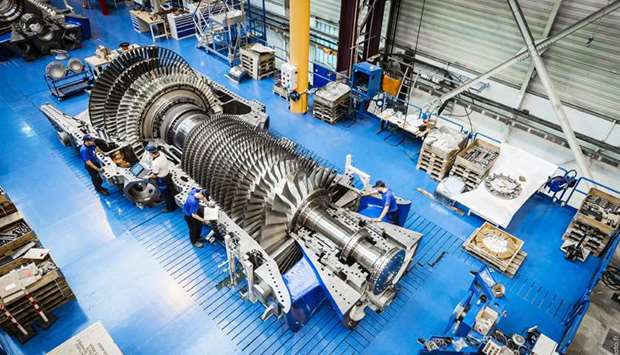Natural gas is more accessible and affordable than ever before, GE Gas Power said and noted efficiency and output improvements in gas-fuelled power generation technologies have complemented the increased availability of gas.
This was highlighted at a recent webinar hosted by GE Gas Power and entitled “Decarbonisation: The Role of Gas in Our Energy Future.”
The Middle East and North Africa’s (Mena) population is projected to continue to grow faster than the global average for the foreseeable future – from over 448mn in 2018 to more than 719mn in 2050.
Some countries in the region, such as Iraq, are recovering from prolonged periods of conflict, while more mature economies like those in the Gulf Cooperation Council (GCC) are diversifying their industrial base.
“As they look to grow and develop further, governments across the region are exploring opportunities to strengthen public infrastructure and trying to balance the growing need for reliable power against climate change concerns and sustainability goals. Consequently, Mena’s energy landscape is undergoing a grand transformation,” said Joseph Anis, president and CEO, GE Gas Power Middle East, North Africa and South Asia.
“Gas-based power generation is poised to serve a critical role in helping to reduce emissions and complement the growth of renewable energy with highly efficient, flexible, affordable, and reliable baseload power as this transformation plays out.”
The following speakers addressed energy sector stakeholders: Abdurrahman Khalidi, chief technology officer, GE Gas Power, Mena and South Asia; Guy Deleonardo, vice-president (Customer Applications), GE Gas Power; and Amit Kulkarni, vice-president (Product Management) GE Gas Power.
The webinar covered three core themes: the evolving energy landscape, the role of gas in decarbonising the power sector, and technological advancements that can support a lower-carbon future.
GE and external analysts predict that as renewable energy becomes more affordable, it will be the fastest growing segment in Mena, and in the overall global energy mix.
It is understood that flexible thermal generation, however, will continue to play a critical but changing role, accounting for up to 60% of power generated globally through 2028.
The most significant trend in global power generation is the projected decline in the use of coal, while gas continues to grow, expecting to account for over one-fifth of total power generated by 2028.
There are three core elements to a sustainable grid: cost, reliability, and environmental impact. Gas is expected to play a strong role in the future energy mix as it can help decarbonise the power sector at affordable costs, while providing access to uninterrupted, dependable power.
Natural gas is more accessible and affordable than ever before. Some 20 countries around the world have built liquefication capacity, while more than 35 countries have regasification capacity. There are currently more than 800mn tonnes per annum (MTPA) of regasification capacity and over 390 MTPA of liquefaction capacity globally.
Efficiency and output improvements in gas-fuelled power generation technologies have complemented the increased availability of gas.
For example, GE’s HA gas turbine technology is now available at over 64% combined-cycle (CC) efficiency and is closing in on 65% – a feat once considered to be almost impossible.
Switching from coal and oil-based power generation to a mix of gas and renewable energy offers a clear path to decarbonisation without compromising the reliability of electricity supply.
Renewable energy is typically intermittent in nature as sunshine, rain, and wind speeds vary over the course of a day, as well as across seasons.
While that energy can be stored, battery storage solutions remain expensive, often making them economically infeasible when required at a large scale. It costs nearly $200 to store one barrel of oil equivalent (BOE) of energy with battery storage solutions. Conversely, storing one barrel of oil or natural gas at scale is nearly $1.
Additionally, electricity typically cannot be cost-effectively stored in large quantities for extended periods of time. For example, a battery with 1 MW of power capacity and four megawatt hours (MWh) of usable energy capacity will usually have a storage duration of four hours. This is another reason battery storage can be useful but is not as reliable and feasible as natural gas in complementing renewables.

GE’s HA gas turbine technology is now available at over 64% combined-cycle (CC) efficiency and is closing in on 65%, a feat once considered almost impossible


